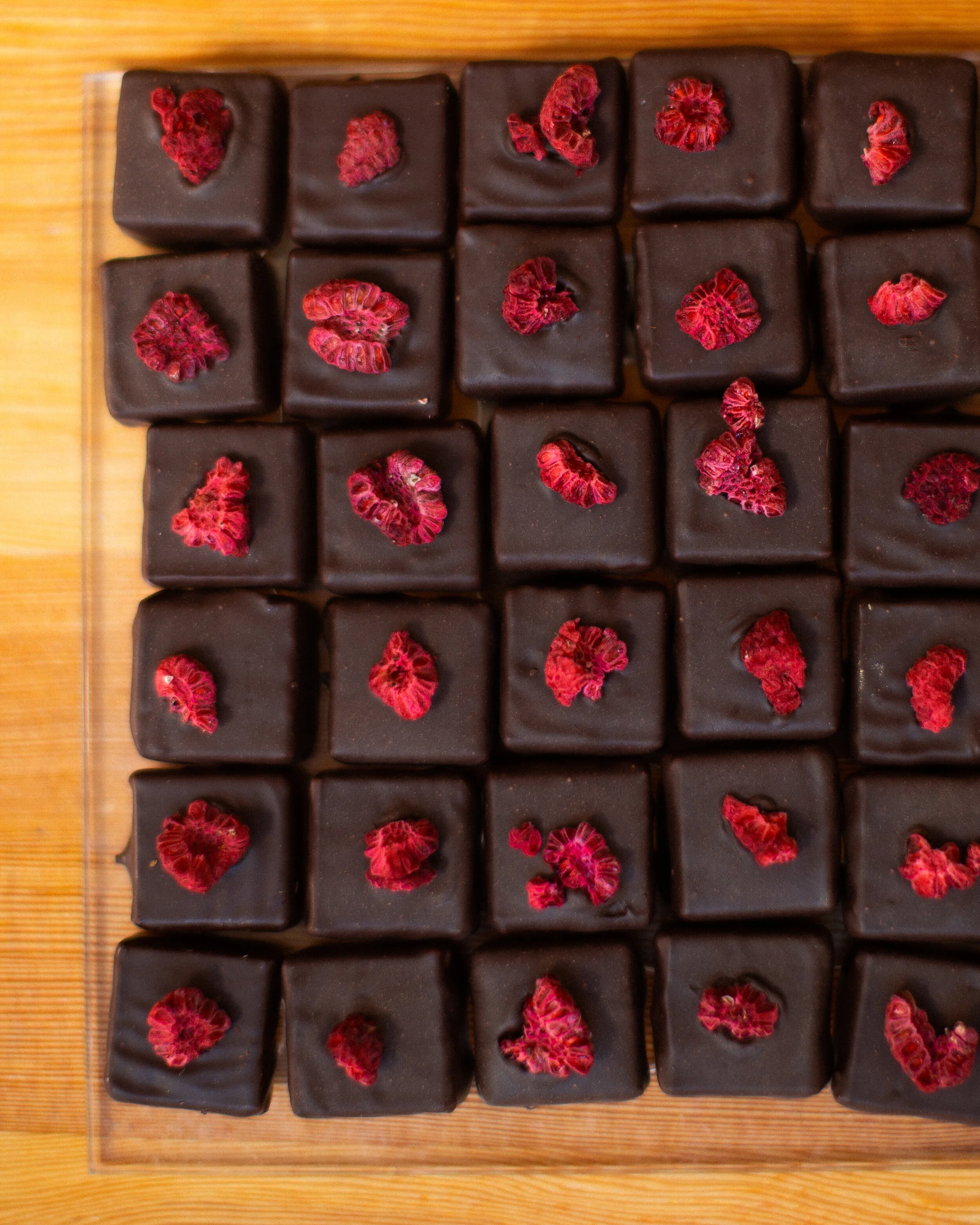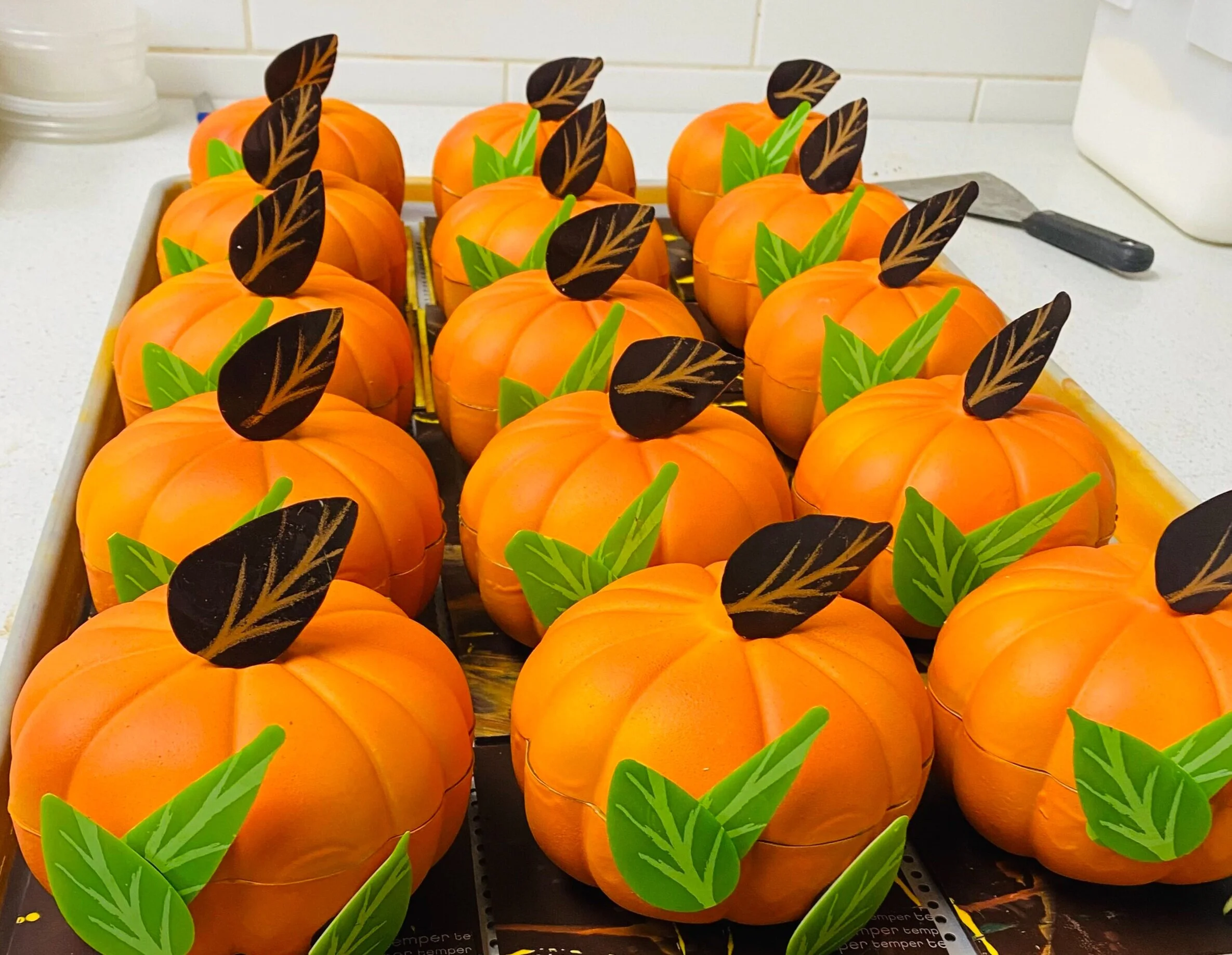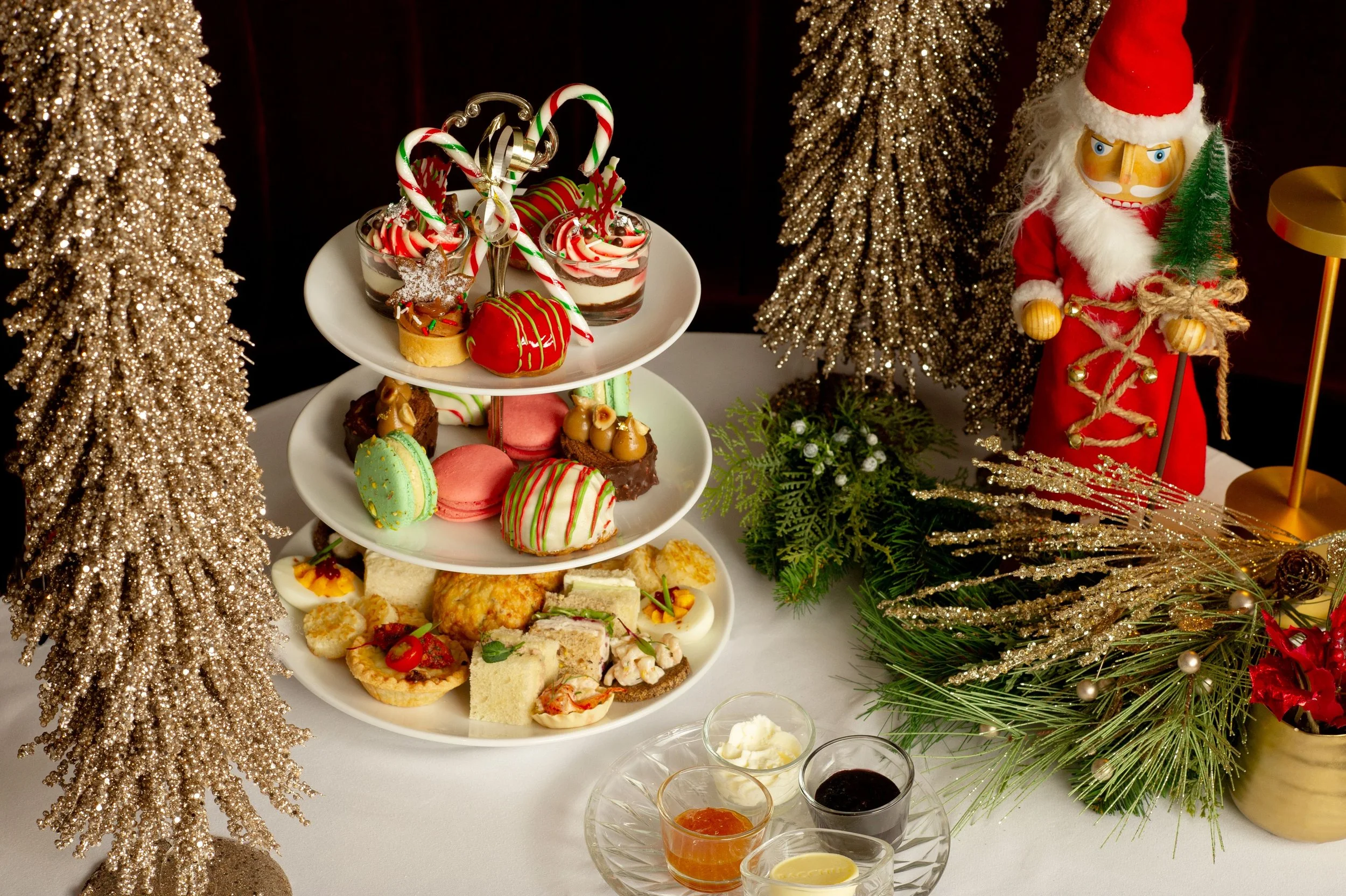Culinary arts: Temper’s new chocolatier Meagan Larmant on Peruvian cacao, vegan treats, and the pain of pastry
The local pastry chef travelled to Central America to learn all about chocolate
Temper Chocolate and Pastry chocolatier Meagan Larmant considers herself an artist in flavour.
MEAGAN LARMANT’S FONDEST childhood memories almost all centre around the dinner table. Growing up in Hawkestone, Ontario, the newly appointed chocolatier at Temper Chocolate and Pastry developed a love of food at young age. It was one of her relatives who suggested she pursue a formal education in culinary arts.
Larmant went on to work in restaurants in Europe and Australia and across Canada, including Vancouver’s L’Abattoir and Araxi Restaurant in Whistler.
Enamoured with chocolate, in 2018 she travelled to Peru to work with local farmers and get a deeper understanding of harvesting and sustainability. Eventually, Larmant wound up at West Vancouver’s Temper, which is owned by pastry chef Steven Hodge. He has mentored her over the last two years, with Larmant taking on more responsibility while he films two TV shows: Great Chocolate Showdown and Project Bakeover (Food Network Canada).
These days, not only is Larmant creating daily and seasonal pastries at the Dundarave spot; she’s also overseeing its café menu. But it’s the art of chocolate that has her heart.
Stir caught up with Larmant to hear about her journey from Ontario kitchens to the West Coast chocolate shop.
What motivated you to pursue culinary arts as a career? And why pastry?
Going through high school I had no idea which colleges I wanted to apply to, let alone which courses or degree to pursue. I was an excellent student—great grades, lots of extracurriculars, volunteer work—but I wasn’t motivated or inspired. It ended up being my Uncle Moe that started me on the road to culinary school. My uncle was an amazing cook. He was obsessed with the Food Network—Bobby Flay in particular. He was the one that taught me to appreciate food and what possibilities it had to offer. He had this beautiful vegetable garden in his backyard; to this day one of the most impressive hobby gardens I have ever seen. He said, ‘Meagan, you like cooking with me, why don’t you give culinary school a try and if you don’t like it then at least you know how to cook for yourself?”, so I did and I never looked back.
Pastry on the other hand was something I thought I would never get into, I started cooking in a time when women were not common in restaurants, and if you were in the kitchen, you did pastry. It was very much ‘oh you're a girl, you can work in pastry; the hotline is too aggressive for you.’ I never wanted to be put in that box. Every time I was asked to do pastry I fought it, I avoided it like the plague, I wanted to be seen as an equal from the beginning.
Then a pastry chef had to leave for maternity leave and I was left to take over regardless of my feelings. It was during that time I saw how much of a pain pastry was. It was finicky, temperamental, needed 100 percent of your attention, no room for error, no do-overs. In cooking, if you make a mistake along the way, odds are you can fix it somehow. But in pastry if you mess up, it can be days of work in the trash! Oftentimes you don’t even know you made a mistake until the final result. That is what got me hooked. You have to have a real understanding of what you are doing in order to succeed in pastry. You have to pay attention to not only what you are doing but also what the oven is doing. The weather, your mood can all affect how your product turns out. That high level of thinking, problem solving, and adapting is what makes pastry so difficult and so much fun.
I also had some medical issues I needed to consider as someone with a heart defect. Your time on the hotline is short even if you are healthy. I made the decision early in my career to switch my focus: if I wanted to stay in the kitchen and work in the best restaurants, then I would do it in pastry.
I am not a classically trained pastry chef; all I have learned about chocolate and pastry has been through self education like travelling to Peru and finding mentors like Steven Hodge who have been willing to teach me. My style of pastry is taking a savoury chef’s approach of looking at the ingredients first and then worrying about the end result. Taking flavours you wouldn’t not have thought of otherwise and making sense of them. I am extremely proud of what I have done so far despite my heart defect setting me back several times in my career. I have had two major heart surgeries and several minor heart procedures while being a pastry chef. My bosses and co-workers have been so supportive and continue to inspire me in my work.
Temper Chocolate and Pastry.
Why did you end up going to Peru? What stands out for you in terms of what you learned there?
I have done a lot of reading on chocolate—I am not talking about recipes or the process of bean to bar; I am talking about the history, why do we use chocolate to begin with; learning about the human fascination with chocolate and what it has meant to us through time. There is a Netflix series called Chef’s Table, and it was the episode on Virgilio Martínez and his [Lima] restaurant Central that cemented my decision to go to South America and get a first-hand education in chocolate. The way he spoke about using ingredients and creating dishes based on their unique flavour profile due to their relation to elevation was fascinating. Chefs talk all the time about the food we eat and the impact it has on our ecosystem so I wanted to find out what that meant in terms of how we grow and develop chocolate.
I found a small but acclaimed cocoa farmer in the town of Quillabamba near Cusco who was more than happy to share his knowledge about the agricultural side of chocolate. Quillabama is the highest elevation that cocoa trees can grow in the world and is home to the Chuncho variety, one of the oldest and most sought-after single origin cocoa beans in the world. Cocoa trees are a very temperamental plant and need very specific growing conditions in order to thrive. I learned about the planting of seeds, how to make a hybrid cocoa tree for bigger higher- yielding pods but about the benefits in terms of quality and flavour of single origin. I learned about farmers’ struggle to pay their workers and the little to no help from government assistance programs….It was an extremely fulfilling experience that ended with me eating at Central Restaurante—ranked number 3 in the world by the World's 50 Best Restaurants—and meeting Chef Virgilio and telling him about my passion for chocolate and more specifically Peruvian chocolate.
What do you love about working with chocolate?
It is very simple; I have never seen anyone sad eating pastry. When people hear I am chocolatier, they instantly light up! Everyone reverts back to childhood. I love working with chocolate because it is hard, because not very many people can master it, because I can take something so frustrating to work with and turn it into something elegant, delicate, and complicated but disguised in simplicity.
Meagan Larmant is especially proud of her new line of vegan chocolates.
While there’s obviously precision and science involved in your work, would you also consider yourself an artist?
Yes, I am absolutely an artist; I am an artist in flavour. Flavour will always come first for me, and like in paintings, sculpture, or designing a room, there has to be balance. There has to be this understanding of how different flavours interact with each other and how we can play with that. Flavour evokes a memory, story, point of view, a lasting impression… Pastry absolutely needs to be beautiful, but if it’s not delicious then what was the point of all that work? Once I nail the flavour profile then I can worry about the colours, the structure, and textures. People eat with their eyes, but if it doesn't taste good, they won’t buy it again.
Any ingredients you're absolutely in love with at the moment?
Yes, I am in love with using shiso. Shiso and chocolate have been a match made in heaven; it is just so satisfying, fresh, and a unique flavour profile to add to chocolate. It is currently one of my favourites that we have in our store right now.
What items would you point to right now as stellar examples of your work?
Th most recent work I am really proud of is the 100-percent plant-based chocolates that I launched for Temper. I feel that plant-based or vegans get the shaft when it comes to fine chocolates; they either get stuck with high percentage chocolate between 75% and 100% ganache, some sort of nut and coconut, and not much else. So I created three flavours that have nuts and coconut but are so packed with flavour that you don’t even miss the dairy. They are our Island Passion, Raspberry Soda, and Almond Rose, and the reaction from our customers has been phenomenal.
Instead of doing a Halloween showpiece this year, I decided to do an all-around fall showpiece to carry through Thanksgiving and Halloween. It’s a pumpkin showpiece filled with chocolates.
Gianduiotto is a chocolate and hazelnut semi-freddo with extra-virgin olive oil, salt, and caramel sauce.
















